strat_thru_marshall
Well-Known Member
I want to get in on this one. I just placed my order for yeast (LHBS only does White Labs).
Sounds like something that will be killer with some age.
Sounds like something that will be killer with some age.

Stay tuned for pictures of the brew day.
I'm looking forward to these. Sadly, it will be a few weeks before I'll be able to brew mine.
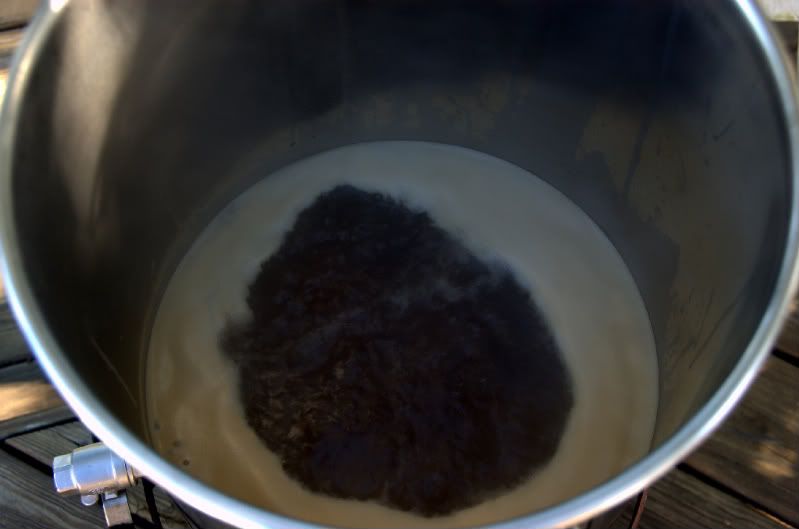
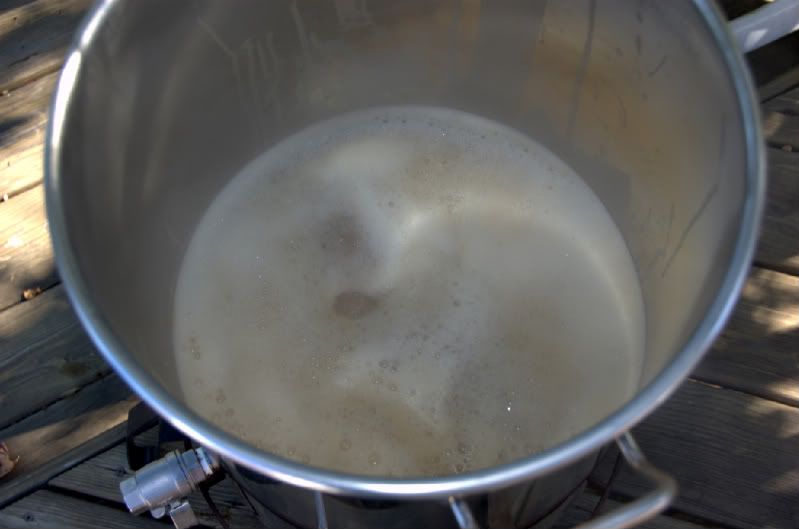
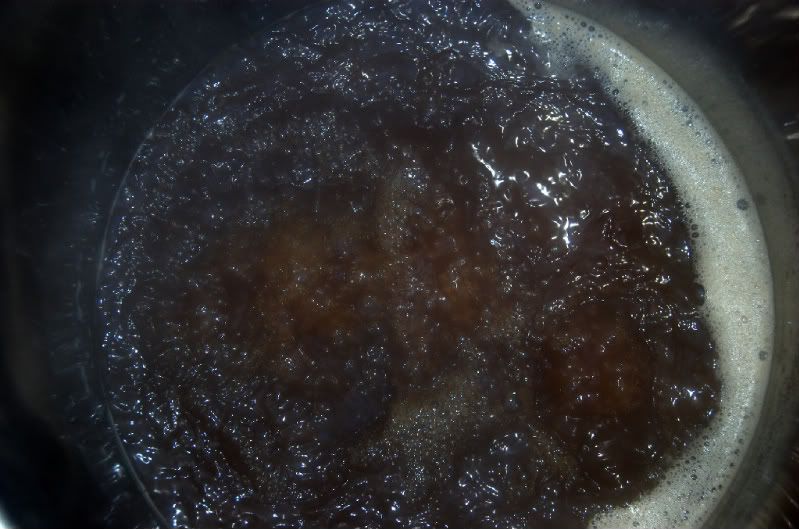
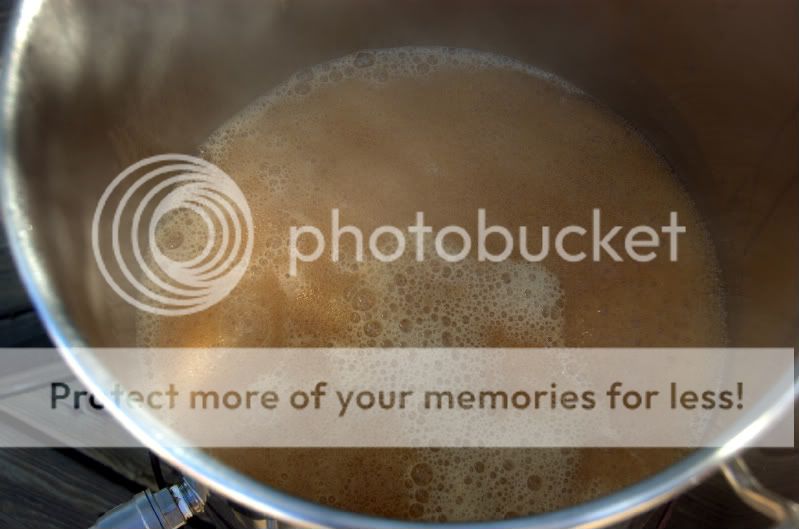
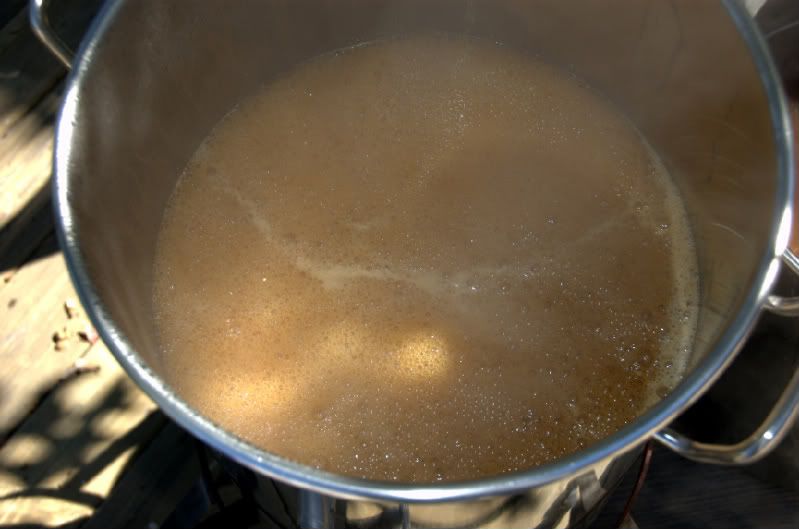
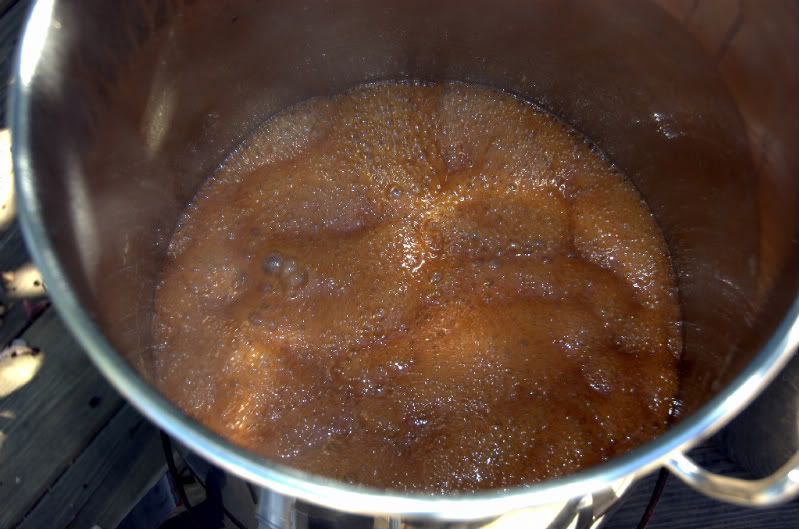
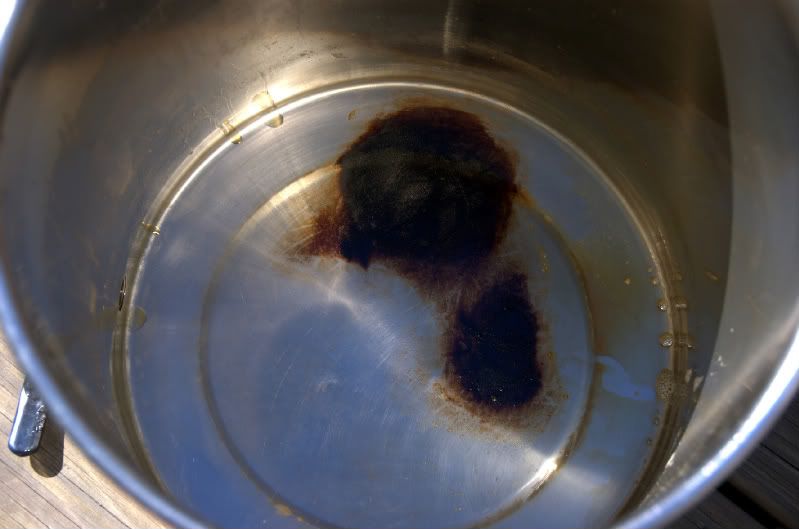
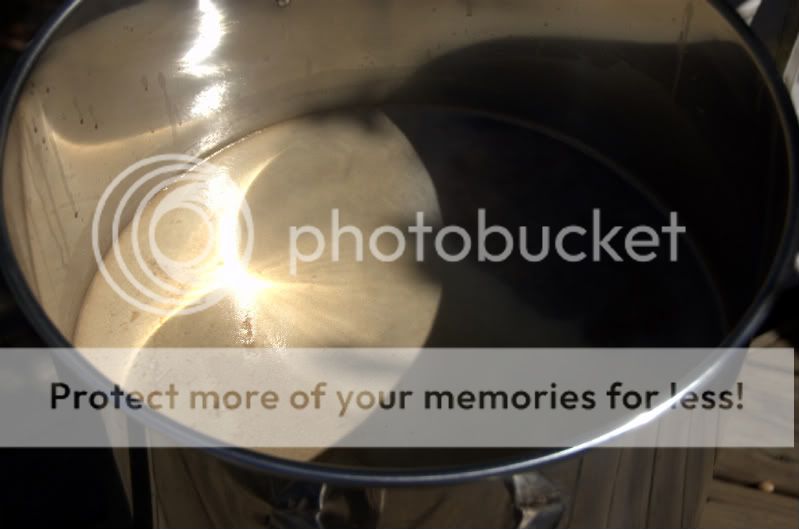
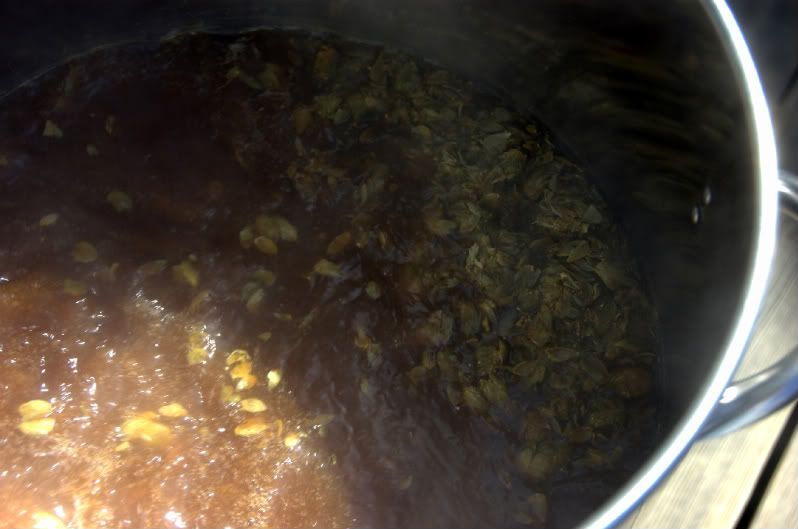
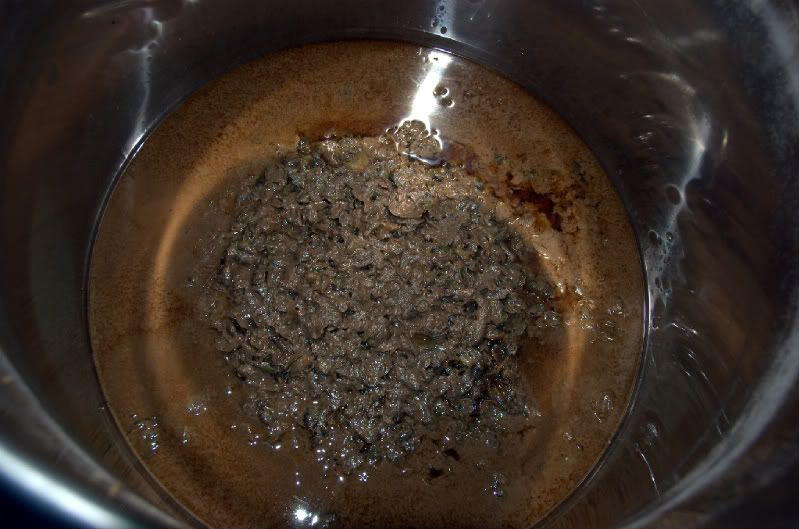
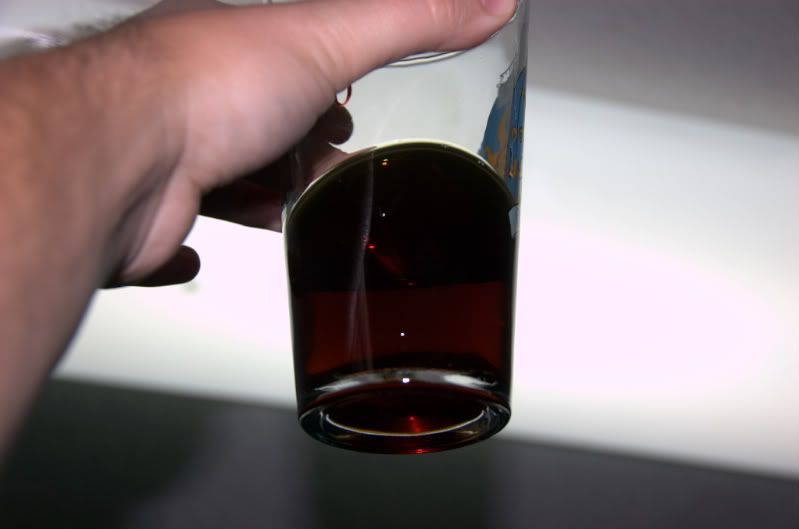
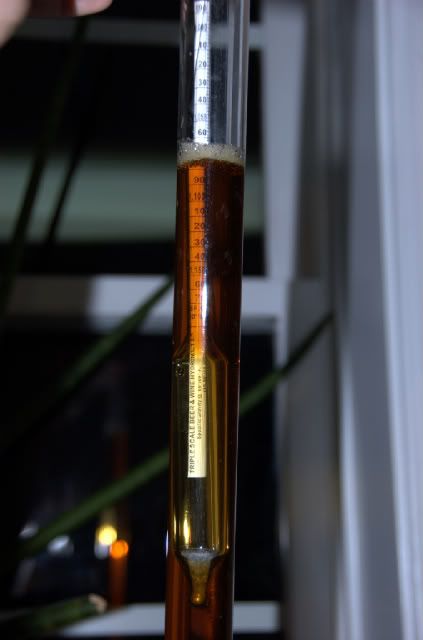
Wow, what a freaking beautiful beer. And thats only the wort!!!

I am getting very excited to brew this beer and cant keep from talking about it. Questions about the reducing of syrup. Did you stir it while you were boiling, and what did you do with your mash in the meantime.
As for what I did with my mash, I ran the rest of the first runnings and all the second runnings into my main boil kettle while I started reducing the 2 gallons of first runnings. Then once all my other runnings were collected, I pulled the pot with the reduction off and put the main boil kettle on the burner to bring it up to about 180 to stop conversion. then I pulled it off and let it sit while I reduced the syrup. Then the syrup was added to the main boil kettle and carried on as usual.
Nice pics Brian! What temp did you hit for your mash?
It's always hard to tell from the wort sample how a beer would be but it tasted good to me!
I didn't read through the whole recipe development thread, but when I saw the 158 degree temperature for both infusion and rest I thought it was a misprint; that the infusion was at 158 (or whatever your system needed) and that the rest would be lower. I thought that getting to 1.016 (80% attenuation) would take a much lower mash temperature. No experience with the 9097-PC is probably my problem. Youre expecting great things from this yeast?It held at 157 for the whole 60 minutes.

I didn't read through the whole recipe development thread, but when I saw the 158 degree temperature for both infusion and rest I thought it was a misprint; that the infusion was at 158 (or whatever your system needed) and that the rest would be lower. I thought that getting to 1.016 (80% attenuation) would take a much lower mash temperature. No experience with the 9097-PC is probably my problem. Youre expecting great things from this yeast?
QUESTION FROM:
Herman Richards
I have a pack of Wyeast 3763-PC Roeselare Ale Blend on the way and have
a couple of questions on its use. Is it a bad idea to make a starter?
My thougt is that the growth rate of the mixed cultures may be
compromised. The other question is related. Rather than make a starter
I sometimes will brew a smaller expermental batch and use that yeast
cake for the intended beer. Would transfering the expermental batch to a
secondary after a week or so and reusing the yeast be a problem with
your blended cultures?
Herman,
It is not recommended to make a starter with this blend. You will
definitely throw off the balance of cultures in the blend. Basically,
you will increase the Saccharomyces population w/o increasing any of the
other cultures.
The second technique you listed would be better than a starter, but once
again, you will not be propagating all of the cultures. This time, you
would be increasing the Saccharomyces culture and maybe some of the
lactic acid bacteria.
Let me know if you have other questions.
Jess Caudill
Brewer/Microbiologist
Wyeast Laboratories
(541) 354-1335
Fortunate that you have the second pack on the way. With my 3763-PC Roeselare I only had one pack, so I split the batch and pitched the yeast onto 2-1/2 gals of wort in a 3 gallon carboy. Not a great shot, but here's where the brett growth is at 17 months in.Maybe I can buy two packs for pitching if its not too late . . .


I made a 2 L starter 48 hrs prior to pitching. I guess since I got a bit of a head start on most of you I might be bale to provide some ide aon whether the Brett seems to be taking off by the time the rest of you are able to brew. I was planning on primarying for 1 month then racking to secondary. Do you think there might be a pellicle in the primary by then or is it too soon? I imagine a pellicle would form pretty quickly in secondary due to the O2 in there.
Anyone else have a comment on this? My knowledge of yeast is limited.AnOldUR, I understood that email as warning against a starter because of the lactic and pedio. I'm not sure a starter would be adverse for the Brett. It will take weeks to kick in and eat the leftovers from the sach anyway. At least that's my understanding.
This is the thread that got me to brew the Flanders Brown mentioned earlier. It's too bad there isn't follow up on these threads where (in Wyeasts words), "Aging for up to 18 months is required for full flavor profile and acidity to develop." I would love to hear how Jason's beer turned out.There is a thread from a year ago of several different brewers using this. . .
Anyone else have a comment on this? My knowledge of yeast is limited.
My take on the email was that the Saccharomyces will reproduce in the time frame of a starter, but all the other bugs will either not reproduce or do it at a slower rate. When you pitch this starter into your wort it will again go through a reproductive stage, but with the Saccharomyces at a higher ratio than what was intended.

Don't think anyone will be chopping you head off. That makes a lot of sense. I wasnt aware of the pedio/lacto/brett/sacc blend in the 3763-PC as compared to just brett and sacc in the 9097-PC. Thanks for the information.I'm sticking my neck out a bit on this one . . .
For the secondary brett fermentation, should you use a 5 gallon carboy for a 5 gallon batch or should you/could you use a larger 6-6.5 gallon fermenter? I figure the brett will be producing CO2, so using a larger fermenter shouldn't be a big deal.
If so, I could do the primary and oaking in my 6.5 gallon bucket then transfer to my 6.5 gallon carboy and let the brett do its thing. Then I can use my 5 gallon carboy for the lager I have going now.
AnOldUR, I understood that email as warning against a starter because of the lactic and pedio. I'm not sure a starter would be adverse for the Brett . . .
Herman,
For this blend, I do not think it as much an issue. The Brett will probably not grow in the starter, as the Saccharomyces will take over, but there should still be enough Brett for long term secondary aging. It may just take a month or two longer.
Jess Caudill
Brewer/Microbiologist
Wyeast Laboratories
(541) 354-1335
KingBrian beings you have brewed this recipe all ready maybe you can help me. Did you just add an additional 2G of sparge water to make up for the boiling down of the first 2 gallons? Or did you just top off your fermenter with added water?
I added 2 gallons of water to the runnings and boiled that with the wort. I didn't want to oversparge and extract tannins so I did it that way. I feel safer boiling the extra water with the wort than adding it to the cooled wort in the fermenter.
Sorry if I gave out bad information on using a starter with the 9097-PC.
Just heard back from Wyeast and like jmo88 said, this yeast is different from the 3763-PC blend.
Quick question, I've never attempted a sour beer and do not intend on attempting it on this one. I plan to use Wyeast 1318 London ale III. Would it be okay to make a starter for this? I assume the talk of no starters is for only thise that making a sour. Also, would I still want to leave it in secondary for 6-8 months? AND, since I've never sat on a beer for anywhere close to this length of time, will I need to add yeast at bottling?
Enter your email address to join: